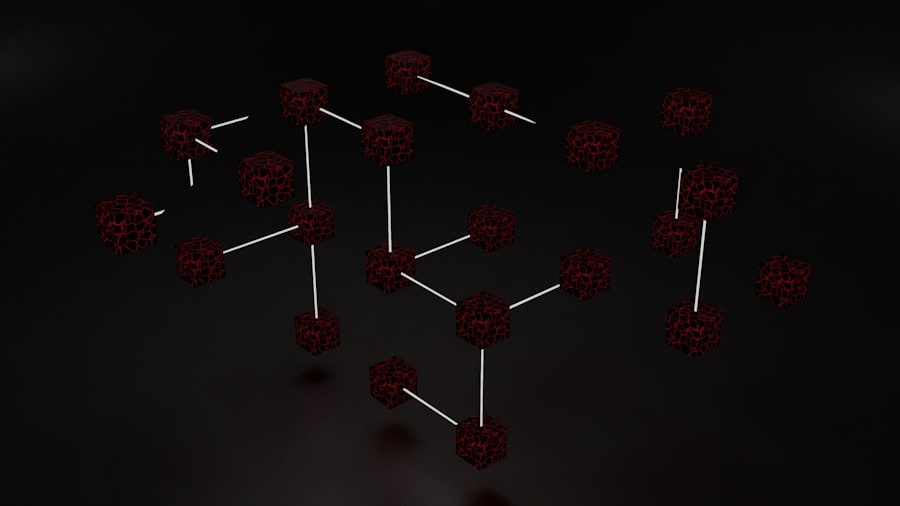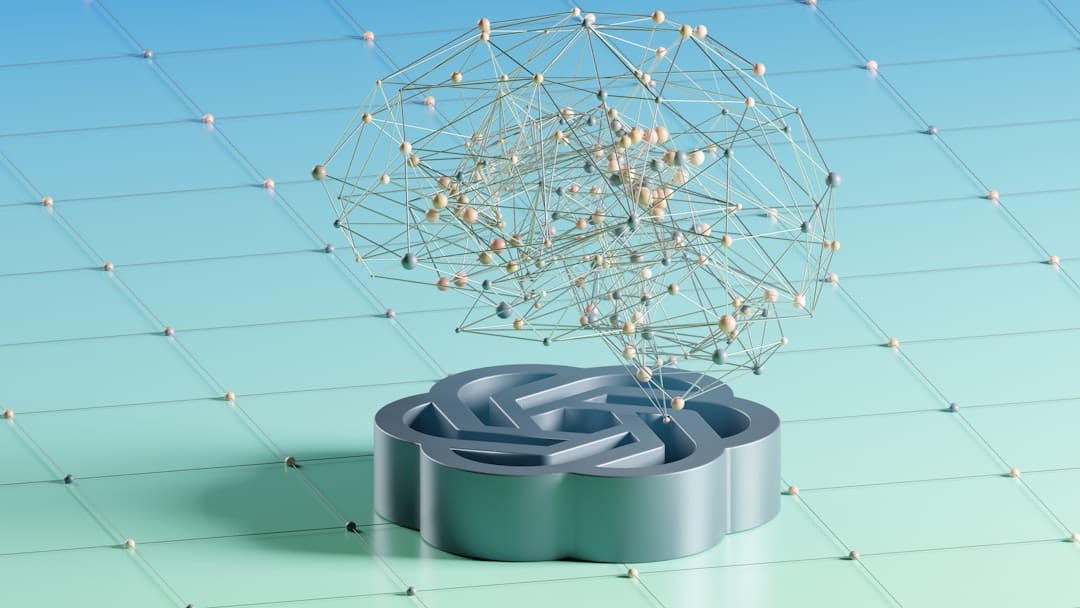Deep neural networks (DNNs) are advanced artificial intelligence systems modeled after the human brain’s neural structure. These networks consist of multiple interconnected layers of artificial neurons that collaboratively process and analyze complex data. DNNs excel at learning from vast amounts of labeled data, enabling them to identify patterns, make predictions, and solve intricate problems across diverse domains.
The foundation of DNNs lies in sophisticated algorithms that employ mathematical functions to transform input data into meaningful output. These algorithms are specifically designed to enhance the network’s learning capabilities and predictive accuracy. Training a DNN involves an iterative process of feeding labeled data into the system and fine-tuning the connections between neurons to minimize errors and optimize performance.
This process continues until the network achieves the desired level of accuracy. DNNs have significantly advanced the field of artificial intelligence by enabling machines to perform tasks previously considered exclusive to human cognition. These tasks include image and speech recognition, natural language processing, and autonomous decision-making.
As a result, DNNs have become indispensable tools across various industries, including healthcare, finance, manufacturing, and transportation. A thorough understanding of DNN fundamentals is essential for leveraging their potential and maximizing their effectiveness in practical applications.
Key Takeaways
- Deep neural nets are a type of artificial intelligence that mimic the human brain’s ability to learn and make decisions.
- Training deep neural nets efficiently requires careful selection of training data, optimization of network architecture, and fine-tuning of hyperparameters.
- Optimizing deep neural nets for real-world applications involves addressing issues such as overfitting, data augmentation, and transfer learning.
- Implementing deep neural nets can be challenging due to issues such as vanishing gradients, overfitting, and computational resources.
- Deep neural nets have the potential to revolutionize various industries, including healthcare, finance, and transportation, by enabling tasks such as image recognition, natural language processing, and autonomous driving.
Training Deep Neural Nets for Maximum Efficiency
Optimization Techniques for Efficient Training
To train DNNs efficiently, it is essential to use efficient algorithms and optimization techniques that can accelerate the learning process and reduce the computational burden. One approach is to use parallel processing and distributed computing to train DNNs across multiple processors or GPUs simultaneously. This can significantly reduce training time and improve overall efficiency.
The Importance of High-Quality Training Data
The choice of training data and the quality of the labels are critical factors in training DNNs for maximum efficiency. High-quality, diverse, and representative training data is essential for ensuring that the network learns to generalize well and make accurate predictions in real-world scenarios.
Techniques for Improving Training Efficiency
Using techniques such as data augmentation and transfer learning can help improve the efficiency of training by leveraging existing knowledge and reducing the amount of new data required. These techniques can significantly reduce the computational burden and improve the overall efficiency of the training process.
Optimizing Deep Neural Nets for Real-World Applications

Optimizing deep neural networks (DNNs) for real-world applications involves fine-tuning the network architecture, hyperparameters, and training process to achieve optimal performance in specific tasks and environments. One approach is to use techniques such as model pruning, quantization, and compression to reduce the size and computational complexity of DNNs without sacrificing accuracy. This can make DNNs more efficient and practical for deployment on resource-constrained devices such as mobile phones and IoT devices.
Another key aspect of optimizing DNNs for real-world applications is ensuring robustness and reliability in diverse and dynamic environments. Techniques such as adversarial training, regularization, and ensemble learning can help improve the generalization and robustness of DNNs, making them more resilient to noise, outliers, and adversarial attacks. Furthermore, optimizing DNNs for real-world applications involves considering ethical and legal implications, such as privacy, fairness, and accountability.
It is essential to design DNNs that respect user privacy, mitigate biases, and provide transparent decision-making processes. By optimizing DNNs for real-world applications, we can unlock their full potential and create AI systems that are reliable, efficient, and ethical.
Overcoming Challenges in Deep Neural Net Implementation
| Challenges | Solutions |
|---|---|
| Vanishing gradients | Use ReLU activation function, batch normalization, or gradient clipping |
| Overfitting | Regularization techniques such as dropout, L1/L2 regularization, or data augmentation |
| Computational resources | Utilize GPU acceleration, distributed training, or model compression |
| Hyperparameter tuning | Grid search, random search, or automated hyperparameter optimization |
| Dataset size | Transfer learning, data augmentation, or synthetic data generation |
Implementing deep neural networks (DNNs) in real-world applications comes with various challenges that need to be addressed to ensure successful deployment and operation. One common challenge is the need for large amounts of labeled data for training DNNs effectively. Acquiring high-quality labeled data can be costly and time-consuming, especially for niche or specialized domains.
Another challenge in DNN implementation is the computational resources required for training and inference. Large-scale DNNs with millions of parameters can be computationally expensive to train and deploy, requiring high-performance hardware such as GPUs or TPUs. Additionally, optimizing DNNs for efficient inference on resource-constrained devices presents a significant challenge that requires careful consideration of model size, complexity, and computational requirements.
Furthermore, ensuring the reliability and safety of DNNs in real-world applications is a critical challenge that needs to be addressed. DNNs are susceptible to adversarial attacks, biases, and unexpected behaviors that can have serious consequences in safety-critical domains such as healthcare, autonomous vehicles, and finance. Overcoming these challenges requires robust testing, validation, and verification processes to ensure that DNNs operate reliably and safely in diverse and dynamic environments.
Harnessing the Potential of Deep Neural Nets in AI
Deep neural networks (DNNs) have immense potential to revolutionize AI by enabling machines to perform complex tasks with human-like intelligence. One key area where DNNs have made significant advancements is in computer vision, where they can recognize objects, detect anomalies, and analyze visual data with high accuracy. This has led to applications in autonomous vehicles, medical imaging, surveillance, and augmented reality.
Another area where DNNs have shown great potential is in natural language processing (NLP), where they can understand, generate, and translate human language with remarkable fluency and accuracy. This has led to applications in chatbots, virtual assistants, sentiment analysis, and language translation services. Furthermore, DNNs have shown promise in reinforcement learning, where they can learn to make autonomous decisions and solve complex problems in dynamic environments.
This has led to applications in robotics, gaming, finance, and logistics. By harnessing the potential of DNNs in AI, we can create intelligent systems that are capable of understanding and interacting with the world in unprecedented ways.
Exploring the Future of Deep Neural Nets and AI

Transparent Decision-Making with Explainable AI
One exciting direction is the development of explainable AI, where DNNs are designed to provide transparent decision-making processes that can be easily understood by humans. This has important implications for building trust in AI systems and ensuring ethical decision-making in critical domains.
Integrating DNNs with Other AI Techniques
Another future direction is the integration of DNNs with other AI techniques such as symbolic reasoning, knowledge representation, and causal inference. By combining different AI approaches, we can create more comprehensive and versatile AI systems that are capable of reasoning, learning, and adapting to complex environments.
Addressing Societal Challenges with AI
The future of DNNs and AI involves addressing societal challenges such as healthcare, climate change, education, and social inequality. By leveraging the power of AI, we can develop innovative solutions that improve quality of life, enhance sustainability, and promote social equity. Exploring the future of DNNs and AI requires interdisciplinary collaboration and ethical considerations to ensure that AI technologies benefit humanity as a whole.
Ethical Considerations in Unleashing the Power of Deep Neural Nets and AI
Unleashing the power of deep neural networks (DNNs) and AI comes with ethical considerations that need to be carefully addressed to ensure responsible development and deployment. One key ethical consideration is privacy, as DNNs often require access to sensitive personal data for training and inference. It is essential to design AI systems that respect user privacy through techniques such as federated learning, differential privacy, and secure multi-party computation.
Another ethical consideration is fairness and bias in AI systems, as DNNs can inadvertently perpetuate or amplify existing societal biases in their decision-making processes. It is crucial to develop AI systems that mitigate biases through fairness-aware algorithms, bias detection tools, and diverse representation in training data. Furthermore, ethical considerations in unleashing the power of DNNs and AI involve accountability and transparency in decision-making processes.
It is essential to design AI systems that provide explanations for their decisions and actions in a transparent and understandable manner. Additionally, establishing clear guidelines for responsible AI development and deployment can help ensure that AI technologies are used ethically and responsibly. In conclusion, understanding the basics of deep neural networks (DNNs) is crucial for harnessing their potential in artificial intelligence (AI).
Training DNNs for maximum efficiency involves using efficient algorithms, parallel processing, high-quality training data, and optimization techniques. Optimizing DNNs for real-world applications requires fine-tuning network architecture, robustness techniques, ethical considerations, and legal implications. Overcoming challenges in DNN implementation involves acquiring labeled data, computational resources for training/inference reliability/safety concerns.
Harnessing the potential of DNNs in AI involves computer vision NLP reinforcement learning applications. Exploring the future of DNNs involves explainable AI integration with other AI techniques addressing societal challenges interdisciplinary collaboration ethical considerations. Ethical considerations in unleashing the power of DNNs involve privacy fairness bias accountability transparency responsible development/deployment guidelines.
If you’re interested in the intersection of technology and virtual reality, you may want to check out the article on creating your virtual identity in the metaverse. This article explores the concept of digital avatars and how they can be used to represent individuals in virtual spaces. It’s a fascinating look at the potential for deep neural nets to create realistic and personalized avatars for users. You can read the full article here.
FAQs
What are deep neural networks?
Deep neural networks are a type of artificial neural network with multiple layers between the input and output layers. They are capable of learning complex patterns and relationships in data, making them suitable for tasks such as image and speech recognition, natural language processing, and more.
How do deep neural networks work?
Deep neural networks work by passing input data through multiple layers of interconnected nodes, or neurons, which apply mathematical operations to the input data. Each layer extracts increasingly abstract features from the input data, allowing the network to learn and make predictions based on the patterns it identifies.
What are the advantages of deep neural networks?
Deep neural networks have the ability to automatically learn and extract features from raw data, making them highly effective for tasks such as image and speech recognition. They can also handle large and complex datasets, and are capable of learning from unstructured data.
What are some common applications of deep neural networks?
Deep neural networks are used in a wide range of applications, including image and speech recognition, natural language processing, recommendation systems, autonomous vehicles, medical diagnosis, and more. They are also used in various industries such as healthcare, finance, and entertainment.
What are some challenges of deep neural networks?
Challenges of deep neural networks include the need for large amounts of labeled training data, the potential for overfitting, the complexity of training and tuning the network, and the computational resources required for training and inference. Additionally, interpreting the decisions made by deep neural networks can be difficult, leading to concerns about transparency and accountability.











Leave a Reply